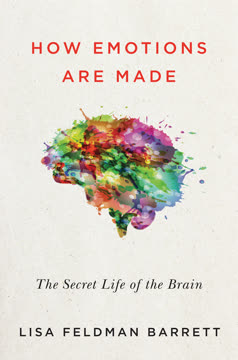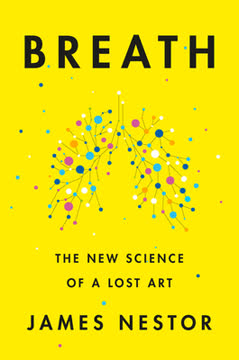Key Takeaways
1. Time is a subjective "inner pulse" distinct from clocks.
But is the time we live by truly identical to the time we read on clocks?
Inner time exists. Beyond the mechanical ticking of clocks and the biological rhythms governing our bodies, there is a subjective sense of time that originates within our consciousness. This "inner time" follows its own mysterious laws, often diverging significantly from external measurements.
Divergent experiences. While a clock hand moves uniformly, our perception of an hour can vary wildly. Unpleasant situations seem agonizingly slow, while happy moments fly by. This disparity highlights that our conscious experience of time is not merely a passive reflection of external duration.
Beyond measurement. Unlike physical quantities like temperature or color, we lack dedicated sensory receptors for time itself. Our understanding and experience of time are constructed by the brain, making it a highly personal and malleable phenomenon, influenced by internal states rather than solely external ticks.
2. Our bodies run on precise biological clocks, influencing daily rhythms.
A hidden clock ticks inside our heads, regulating all the processes in our bodies and guiding us through the succession of day and night.
Biological precision. Deep within us, a biological clock, centered in the suprachiasmatic nuclei of the brain, orchestrates countless bodily functions. This internal chronometer regulates everything from blood pressure and hormone levels to sleep-wake cycles, operating with remarkable accuracy over a lifetime.
Owls and larks. This biological clock dictates our natural predisposition to be either morning people ("larks") or night people ("owls"). Our genetic makeup influences the precise length of our internal day (slightly over 24 hours for most), determining when we naturally feel most alert or tired.
Light resets the clock. While the internal clock has its own rhythm, it is primarily reset by exposure to light, particularly daylight. This external cue synchronizes our internal timing with the solar day, ensuring our biological processes align with the environment, though modern indoor life can disrupt this natural alignment.
3. Perceiving time involves brain mechanisms tied to movement and memory.
For the brain, time is motion.
Movement as a gauge. Our ability to perceive short intervals of time, like seconds, is deeply linked to the brain's mechanisms for controlling movement. Areas like the cerebellum and basal ganglia, crucial for coordinating actions, also function as pacemakers that help us gauge brief durations.
Memory's role. For longer intervals, our perception relies heavily on memory, particularly working memory. We estimate durations by comparing current experiences to past ones, using the sequence and richness of remembered events as a yardstick.
Interconnected systems. The sense of time is not localized to a single brain region but emerges from the complex interaction of multiple systems, including those for movement, memory, and attention. Damage to any of these areas can significantly distort our perception of time.
4. Subjective time expands or contracts based on attention and experience.
When you sit with a nice girl for two hours, it seems like two minutes; when you sit on a hot oven for two minutes, it seems like two hours.
Attention is key. How quickly time seems to pass is heavily influenced by where our attention is directed. When we are engrossed in an activity or experiencing intense emotions (like fear), our attention is heightened, and time appears to slow down or expand.
Distraction speeds time. Conversely, when our minds are distracted, bored, or focused elsewhere, we pay less attention to the passage of time. This lack of temporal cues makes the duration seem shorter in retrospect, causing hours to "fly by."
Information density. The perceived length of a past interval correlates with the amount of information our memory stored during that time. Novel, stimulating experiences lead to richer memories and make the period seem longer in retrospect, while monotonous periods feel compressed.
5. Memory actively constructs our past, shaping our sense of time's passage.
We are the Architects of Our Memory.
Memory is reconstructive. Our memory is not a perfect recording device but an active process of construction. We piece together fragments of past experiences, often filling in gaps and subtly altering details based on our current state of mind and beliefs.
Coding and retrieval. The brain breaks down experiences into component parts (sights, sounds, emotions) and stores them in different areas. The hippocampus plays a key role in coding these fragments and their connections, allowing us to later reconstruct the event, including its temporal context.
Past shapes present. Our memories don't just reflect the past; they shape our present identity and future expectations. The way we recall events influences our emotions, decisions, and overall sense of self, making us a virtual compendium of our personal history.
6. Life seems to speed up as we age due to how memory consolidates experiences.
Why Life Speeds Up as We Grow Older.
Memory density decreases. As we age, the rate at which we form new, distinct memories slows down. Childhood and adolescence are filled with novel experiences, leading to a dense collection of memories that make those years seem long in retrospect.
Routine compresses time. Adult life often becomes more routine, with fewer truly novel events. Since our retrospective judgment of time is linked to the density of stored memories, periods of routine feel compressed, making years seem shorter than they did in youth.
Brain changes. Age-related changes in the brain, particularly in the frontal lobes responsible for source memory (remembering when and where something happened), also contribute to a blurring of temporal order and a feeling that recent past is less distinct or extensive.
7. Modern society's accelerated pace is driven by external stimuli and internal craving.
The Allure of Speed.
Historical acceleration. Since the advent of precise clocks and industrialization, the pace of life has steadily increased, driven by technological advancements in travel and communication. What felt fast to Goethe in 1825 is leisurely by today's standards.
Stimulus overload. We are constantly bombarded with information and stimuli, from rapid media cuts to incessant notifications. This creates a state of perpetual arousal, making it difficult to focus and contributing to a feeling of being overwhelmed.
Addiction to speed. Our brains are wired to seek out new stimuli, releasing dopamine that creates a sense of excitement. This makes the fast pace and constant connectivity addictive, even when it undermines our ability to concentrate or relax.
8. Feeling time-pressured stems less from actual scarcity than from internal factors.
Little Time Big Stress.
Time abundance paradox. Despite having more leisure time and longer lifespans than previous generations, a significant portion of people report feeling constantly rushed. This suggests the problem isn't a lack of time itself, but how we perceive and manage it.
Internal time wasters. The feeling of being time-poor often originates from internal sources rather than external demands. Key factors include an inability to concentrate, heightened stress responses, and a lack of clear motivation or priorities.
Subjective experience. Time pressure is a subjective feeling. People with objectively similar schedules can experience vastly different levels of stress, indicating that our attitude, control, and perception of time are more critical than the sheer number of hours in our day.
9. Stress is primarily triggered by a perceived lack of control over time.
Ruled by the Clock.
Control mitigates stress. Studies show that stress is less about the amount of work or the speed required and more about the feeling of having no control over one's schedule or tasks. Being dictated by external rhythms or others' demands is a major stressor.
Physiological response. When we feel powerless over a situation, our body triggers a stress response (releasing adrenaline, cortisol, etc.) designed for fight or flight. This ancient mechanism is ill-suited to modern time pressures and can lead to chronic health issues.
Self-imposed lack of control. Modern technology, like constant e-mail access, can create a feeling of being perpetually on call, eroding autonomy and increasing stress, even when the demands aren't objectively overwhelming. We often surrender control willingly.
10. Motivation & Focus Are Key to Using Time Well
Masters of Our Time.
Motivation drives action. Our inner drive plays a crucial role in how we use our time. When we are strongly motivated by a goal, whether immediate pleasure or a compelling future vision, our executive function is enhanced, helping us stay focused and manage tasks efficiently.
Executive function. This cognitive ability, centered in the prefrontal cortex, manages our intentions, prioritizes tasks, and helps us resist distractions. Its effectiveness is influenced by neurotransmitters like dopamine and can be strengthened through practice.
Goal-oriented behavior. We are more likely to use our time effectively when we have clear goals. Visualizing the rewards of achieving a goal, even a distant one, creates "somatic markers" that guide our decisions and help us overcome the temptation of immediate, less productive distractions.
11. Physical time is relative, influenced by motion and gravity, and may not be fundamental.
Dismantling the Clock.
Einstein's relativity. Physics shows that time is not absolute but relative. According to Einstein's theories, the passage of time is influenced by an observer's motion (moving clocks run slower) and the presence of massive objects (gravity slows time).
Time is not a substance. Unlike space, which we can move through freely, time appears to carry us along. However, physics suggests that time might not be a fundamental building block of the universe but rather an emergent property related to change and the increase of entropy.
Arrow of time. The direction of time, from past to future, is linked to the second law of thermodynamics – the tendency for disorder (entropy) to increase in a closed system. While simple physical processes are reversible, the overall development of the universe is not.
12. Cultivating a new culture of time requires conscious control and mindful presence.
A New Culture of Time.
Beyond the clock. A healthier relationship with time involves moving beyond the rigid, abstract concept dictated by clocks and embracing our subjective experience and biological rhythms. It's about making conscious choices rather than being ruled by external or self-imposed pressures.
Six steps to mastery. Practical steps include:
- Gaining sovereignty over your schedule.
- Aligning your activities with your natural biological clock.
- Actively cultivating leisure time for balance and restoration.
- Practicing mindful presence to fully experience moments.
- Training your ability to concentrate and resist distractions.
- Setting clear priorities based on your values.
Shaping our experience. Time is not just something that happens to us; it is something we actively create through our perception, attention, and choices. By understanding its nature and our own internal mechanisms, we can become masters of our time, enriching our lives rather than feeling perpetually rushed.
Last updated:
Review Summary
The Secret Pulse of Time explores time perception, neuroscience, and cultural perspectives on time. Readers appreciate its scientific approach and philosophical reflections, finding it thought-provoking and insightful. Some praise its practical advice on time management and productivity, while others note its complexity. The book challenges conventional views on time, offering a fresh perspective on life's scarcest commodity. Many readers found it enlightening, though some felt certain sections were too abstract or complicated. Overall, it's recommended for those seeking a deeper understanding of time's role in shaping human experience.
Similar Books
Download PDF
Download EPUB
.epub digital book format is ideal for reading ebooks on phones, tablets, and e-readers.











